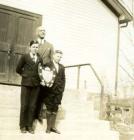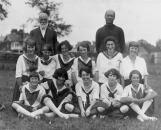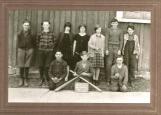1
Beyond the books and lessons, tests and reports, students enjoyed the social aspect of school 100 years ago as much as they do today.Student activity was at a high point during recess. The chance to escape the confine of a desk and classroom was looked forward to with anticipation. Mostly the play was outdoors on the school grounds, perhaps for the sake of the teacher as well as the students. Walter Rolling was known to participate in baseball games with his students and sometimes extended the break to allow time for a game to finish.
3
Some students were lucky to have the support of their teacher to pursue extra-curricular activities. In this photo from 1932, 2 students pose with their teacher and an award presented for Oratory (or public speaking) Skills.4
Students and teacher (Miss Courtney) of Kinghorn School receiving a provincial award1958
King Township
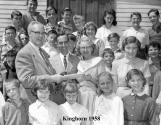 Credits:
Credits:King Township Archives
5
King City students playing hockey on the Humber Rivercirca 1940
King Township
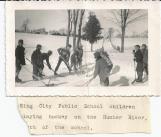 Credits:
Credits:King Township Archives
6
Schoolyard games were seasonal and adjusted to the changing weather with sledding and skating in the winter and baseball and tag in the warmer months.10
In her book 'Yesterday for Today and Tomorrow' Alice Ferguson again gives her opinion on school activities."Our school yards are usually of an acre in size. This gives abundant room for decoration and for play. A large part of the school yard is set apart for games, running games, football, baseball or cricket; a smaller corner for quoits, also a croquet lawn with a set of croquet bats. There should be a school garden, also a flower border. For the young children there should be provided at least one swing, also a teeter. Trees are a necessity so that around the site should be planted shade trees, with a hedge if possible on the west."
11
Linton School children collecting milkweed for the war effort1944
King Township
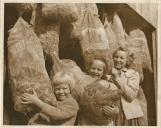 Credits:
Credits:King Township Archives
